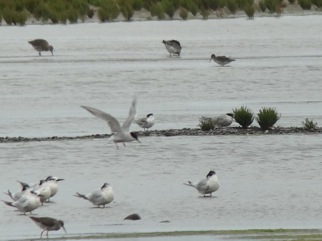We’re just back from Dorset, where we stayed at Lower Bockhampton and travelled around much of Hardy’s Wessex searching out the sites believed to have been the inspiration behind many of the locations used by him in his popular novels and poems. Here is a selection of some of the fabulous and fascinating places we visited.
Under the Greenwood Tree
The replacement of the church choir by an organ is a prominent theme in the novel. Although the setting was the church at Stinsford, where Hardy’s father was a musician in the choir, the gallery was subsequently removed. TH took guests to see one of the few remaining galleries in Dorset, at nearby Puddletown

17th century graffiti on the musicians gallery

Keeper Day’s cottage, in Yalbury Wood – based on this remote cottage in Yellowham Wood

Pair of Blue Eyes
The Smith’s cottage in the Valency valley – where, in the book, the young architects parents reside

Widow Jethway’s cottage – based on another cottage in the same remote Cornish valley

In real life, Hardy’s takes Emma down to the stream in the Vallency valley for a picnic and, in a famous event, she loses a glass in the water. Hardy captures the moment in a sketch and later a poem – Under the Water Fall

Paddle steamers feature in several of Hardy’s novels, in this particular one there is only a brief reference. The Waverley, here pictured moored at Swanage, is the only working ocean-going vessel of her kind left in the world

Far from the Madding Crowd
This grand property was the model for Upper Farm, which Bathsheba inherits from her uncle (photo courtesy of RW)

This, now converted tithe barn at Cerne Abbas, is thought to be the inspiration for the wedding celebration barn in the novel

Lulworth Cove, the scene of Sergeant Troy’s thwarted attempt to drown himself

TH’s poem, At Lulworth Cove a Centuary Back

The Hand of Ethelberta
In the novel, Ethelberta rides to Corvesgate (Corfe Castle) on a donkey

Christopher Julian, one of Ethelberta’s suitors, plays the organ in Melchester cathedral – Salisbury, in real life

The Trumpet-Major
The lower mill at Sutton Poyntz is believed to be Hardy’s inspiration for Overcombe Mill, where the heroine lodges and from where she can observe the regimental goings-on in their camp, on the hill behind

Anne, the heroine, watches the Fleet departing for Spain from Pulpit Rock, close by this lighthouse on Portland Beal

Figure of King George III, carved in this Dorset chalk escarpment, to honour a visit by the royal

King George is also commemorated in this recently restored statue on Weymouth seafront

Major of Casterbridge
Some of the remaining booths at Weyhill Fair, where the drunken Michael Henchard sold his wife, Susan, to a passing sailor!

Henchard’s Casterbridge house after he’s made his fortune and became mayor of the town

Susan spies Michael Henchard at a meeting in a first floor room of the King’s Arms Hotel, years after their estrangement

Gray’s Bridge – frequently visited by Henchard in his more melancholy moods (photo courtesy RW)

Through an unfortunate chain of events Henchard is financially ruined, but is then given, by the townsmen of Casterbridge, a seed merchant’s shop to manage, overlooking the church yard

Tess of the d’Urbervilles
The model for Tess’s family home, before the death of her father and their subsequent eviction

Tess goes to work as a milk-maid on Talbothays Farm, before her marriage to Angel. The dormer window is said to be the bedroom where Tess prepared for her wedding

West Stafford church, used by Hardy as the location for Tess & Angel’s wedding

Wellbridge manor where Tess & Angel spend their honeymoon

The fatherless family camp in the churchyard, under the d’Urberville window at Bere Regis church, seeking recognition of their rightful inheritance

The Cross in Hand, hidden in a Dorset hedgerow – omen of mis-fortune for Tess

After Tess murders Alec, she and Angel run away. They take shelter at Stonehenge, where she is arrested and subsequently tried and hanged

Jude the Obscure
Jude finds employment as a stonemason, working on Melchester cathedral (Salisbury)

Jude is believed to have resided in accommodation close to Town Gate

Sue, Jude’s cousin, lives in Shaston (Shaftesbury)



The Well-beloved
Thought to be the model for Avice’s cottage, now the Portland Museum

Pierston rents Sylvania Castle in his pursuit of Avice

Photograph of Thomas Hardy, taken in his study at Max Gate, shortly before his death in 1928. From humble beginnings he became one of the most prodigious 19th century British authors, with more than ten popular novels and nearly a thousand poems to his name. He lived the majority of his life in Dorset and created a virtual landscape – Wessex, through which he captured, described and preserved many of the customs, traditions and hard-ships of a by-gone era.

For more photographs, covering the whole Thomas Hardy Trail week, visit http://www.robinwilliamsphotography.com/thomashardy
























































































